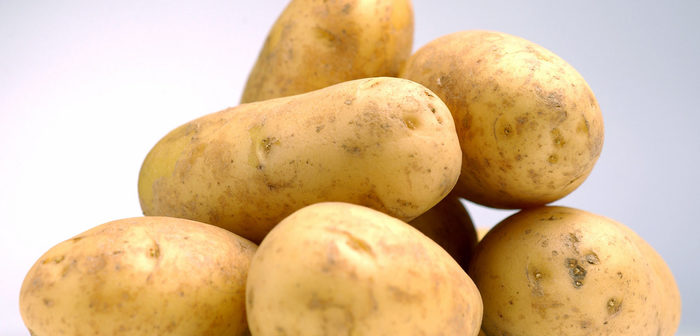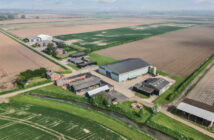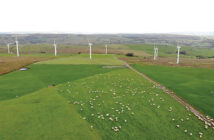Field trials conducted during the 2017 growing season in the UK have shown how the use of smart technology, combined with training and greater supply chain collaboration, can help maximise crop yields. The work, undertaken in East Anglia, also highlighted how early intervention can help prevent produce falling outside of specifications; one of the most significant causes of crop rejection in primary production.
The trials involved 14 potato growers from ASDA’s Integrated Procurement & Logistics (IPL) fresh produce business, and sustainability experts WRAP. The project followed the potatoes from sowing in 2017 through to harvest and storage into 2018, and saw participating farms grow a combination of salad and fresh potato crops using Belana, Nectar and Maris Piper varieties, which were sold in ASDA stores.
The trials helped to increase yields by providing growers with critical information on the development of crops earlier than normal, this was achieved through greater monitoring and measurement throughout the season. Dedicated training was provided prior to planting on best practice in crop management techniques, and collaborative support was given throughout the trials.
Growers were also instructed in the use of the Potato Yield Model developed by NIAB to give key yield data as early as possible. This smart technology allows farmers to forecast the total and graded potato yields ahead of harvest. The Model uses real time visual imagery and historical data from commercial crops to provide a forecast up to ten weeks before harvest. The early insight helped inform decisions around supply and demand for both the farmer and supply chain, and guide decisions around key actions such as when to stop the crop growing.
The findings of the research have been published in a new report from WRAP, Improving performance in the fresh potato supply chain, along with a series of recommendations around standardising crop yield measurement in primary production.
WRAP’s study also found significant inconsistencies in the yields and performances of the participating growers; all of whom operate in the same region of the UK. The disparity was particularly noticeable between the highest and the lowest total crop yields. For one variety, Belana, the best performing crop generated nearly £10,000 more revenue per hectare than the lowest. While for Nectar, where differences were less pronounced, variation was still £2,000 per hectare in some instances. Based on an average field size of 10 ha, the difference could be worth in the region of £100,000 and £20,000 respectively, in terms of revenue.
Whilst farm-specific factors such as weather and soil type will explain some differences, WRAP believes this variation points to widescale differences in grower productivity across the UK, and that the training and technology interventions trialled with ASDA IPL could help improve crop yields further afield, and maximise the volume of produce meeting client specifications for many more growers. Peter Maddox, Director at WRAP, “Improving crop yields without putting added stress on the environment is what everyone wants, and these trials show that closer monitoring and more standardised measurement can make that happen. We want more growers and their customers to look into the details of how this can be applied to their operations.”
WRAP found considerable willingness by participants to incorporate the measuring regimes tested into their future operations, with feedback showing more than 80% considered making changes to the way they operate as a result of their experience.
Ian Harrison, IPL’s technical director, said “At IPL, we are really interested to see how yields can be improved and better predicted ahead of pack-out in our facilities. Any tool that can reduce uncertainty in our supply chain gives a huge benefit to our planning and operations, and the work WRAP are undertaking should give a common approach across the industry.”
In terms of how yields are utilised, WRAP recorded the rates for how much of a crop is diverted to lower value uses (outside of specifications). These ranged between 14% and 37% of the total crop, across all varieties, with potatoes falling outside of size specification being the most common factor for rejection, rather than quality defects. Very little of the actual crop is wasted once at the packhouse however, but in most cases the proportion of the crop diverted away from its intended use (specification) to lower value uses; such as other markets or stock feed, represents a significant loss in revenue for the farmer and supply chain.
The trials also found it was impossible to collect suitable data once the crop had left the field. This was due to differences in how yields were measured, and the lack of transparency over what happened to the crop before it was measured and whether it was combined with produce from other fields; or had defects removed.
The way the supply chain operates can further complicate this situation. Often last-minute unplanned changes to specifications cause additional produce to fall outside of specification; while conversely greater flexibility around specifications can mean more produce is included when there are instances of gluts or weather-related imperfections.
A new standard for measuring crop performance and waste
WRAP has made a series of recommendations to address the issues highlighted in its report, principally around the need for standardisation of measurement in primary production. The organisation is working to see what is possible in terms of standardising measurement more widely:
• Work is required to provide a common data standard and metrics for measuring performance of commercial potato crops in the field. This would allow industry to identify the causes of crop variation and continuously improve.
• A standard should operate across the entire industry and be used by all supply chains. In the case of potatoes, it should be adopted across different categories (fresh and processed), and could even inform decisions around other fresh produce crops.
• A standard should include protocols for collecting data during the season (canopy cover and test digs) and at the end of the season.
The organisation further recommends that clients regularly update and review their individual specifications to boost supply chain efficiency. This can help by making specifications shorter, identify provisions that are out of date or invalid, and make them easier for suppliers to implement. WRAP produced guidance for clients to highlight best practice in setting specifications.




